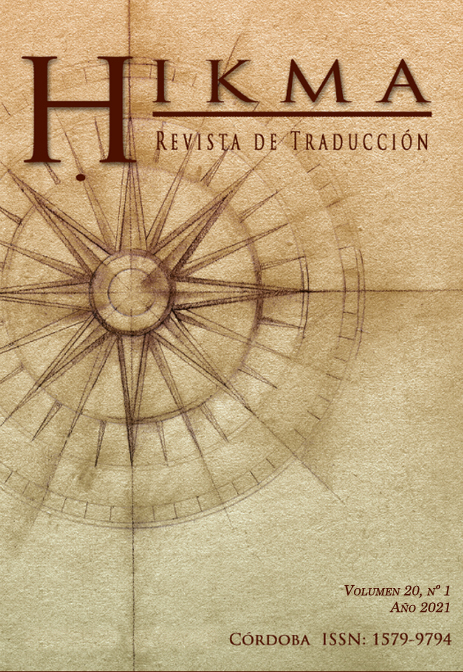El arte de la traducción de Jiří Levý: desde la génesis del original hasta su recepción en el mundo hispanófono y lusófono
Contenido principal del artículo
Resumen
En este artículo tratamos de describir la génesis de la obra fundamental de Jiři Levý El arte de la traducción (1963) desde los primeros años de la década de los cincuenta, así como los avatares de su accidentada recepción internacional hasta la actualidad. La primera edición checa de la obra fue precedida por toda una serie investigaciones interdisciplinarias de las que queda constancia en artículos, manuales, conferencias y notas manuscritas. Este proceso se prolongó en las traducciones al alemán y al ruso de la obra (1969 y 1974), en las cuales Levý colaboró estrechamente con sus traductores realizando adaptaciones y modificaciones de diversos tipos para acercar la obra a sus receptores en las culturas de destino. En particular, la traducción alemana fue importante porque sirvió para difundir las ideas de Levý en el extranjero y también porque fungió, junto con el original checo, como patrón en la segunda edición checa de la obra, preparada por Karel Hausenblas en 1983, y que ha servido de modelo para todas las ediciones posteriores. Durante mucho tiempo la obra de Levý permaneció desconocida para el público internacional por motivos de índole lingüística y política, entre otros. Sin embargo, en la última década hemos presenciado un renacimiento del interés por su concepción teórica, evidenciado en la aparición de nuevas traducciones, a la que se considera como precursora de inquietudes teóricas contemporáneas.
Palabras clave: Jiři Levý, El arte de la traducción, Estructuralismo checo, Traductología, Historia de la traducción
Descargas
Detalles del artículo

Esta obra está bajo una licencia internacional Creative Commons Atribución-NoComercial-CompartirIgual 4.0.
Los autores que publican en esta revista aceptan las siguientes condiciones:
- Los autores conservan los derechos de autor y conceden a la revista el derecho de primera publicación con el trabajo simultáneamente bajo una Licencia de Atribución Creative Commons que permite a otros compartir el trabajo con un reconocimiento de la autoría del trabajo y la publicación inicial en esta revista.
- Los autores pueden llegar a acuerdos contractuales adicionales por separado para la distribución no exclusiva de la versión publicada del trabajo en la revista (por ejemplo, enviarlo a un repositorio institucional o publicarlo en un libro), con un reconocimiento de su publicación inicial en esta revista.
- Se permite y anima a los autores a publicar sus trabajos en línea (por ejemplo, en repositorios institucionales o en su sitio web) antes y durante el proceso de presentación, ya que puede dar lugar a intercambios productivos, así como a una citación más temprana y mayor del trabajo publicado (Véase El efecto del acceso abierto).

